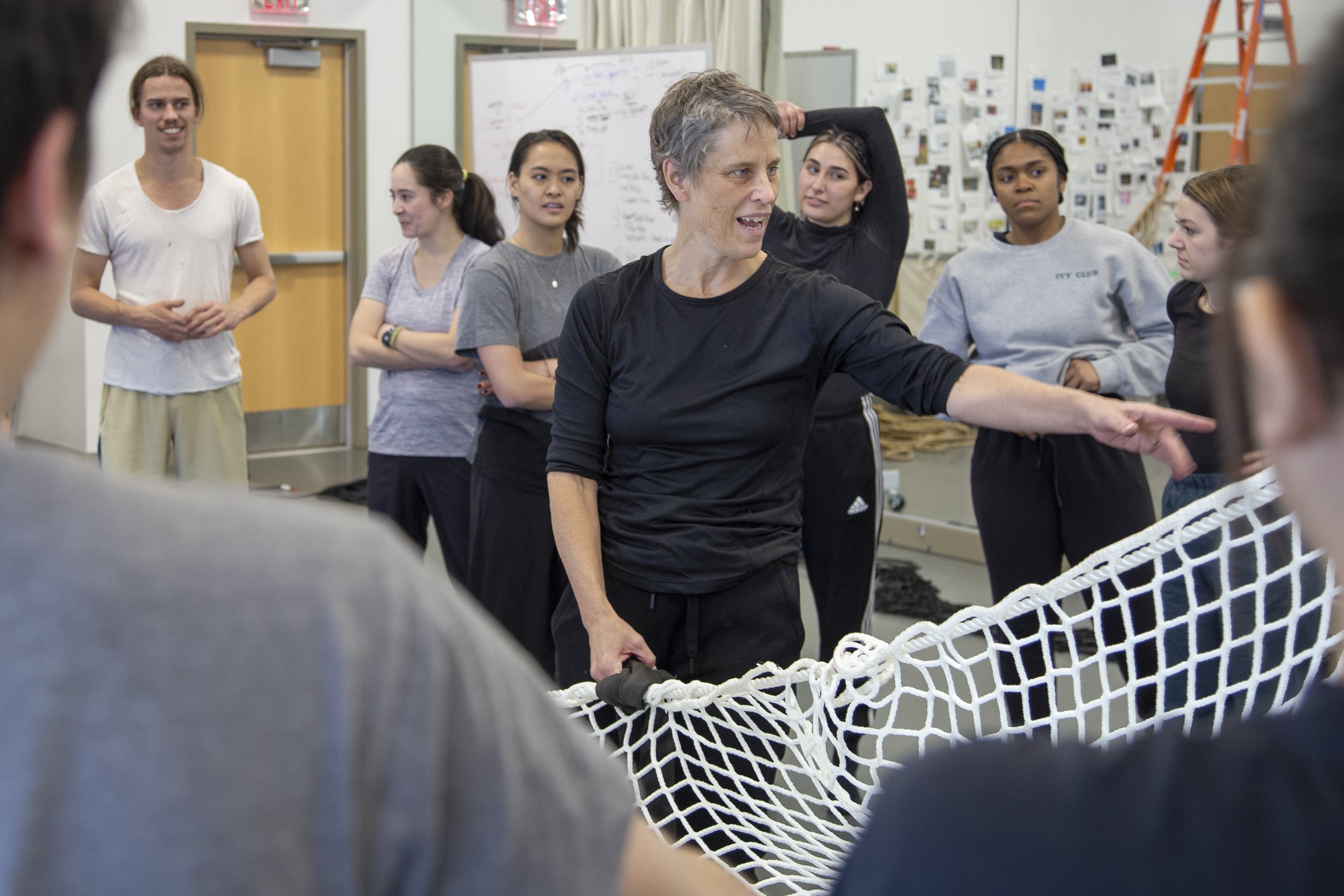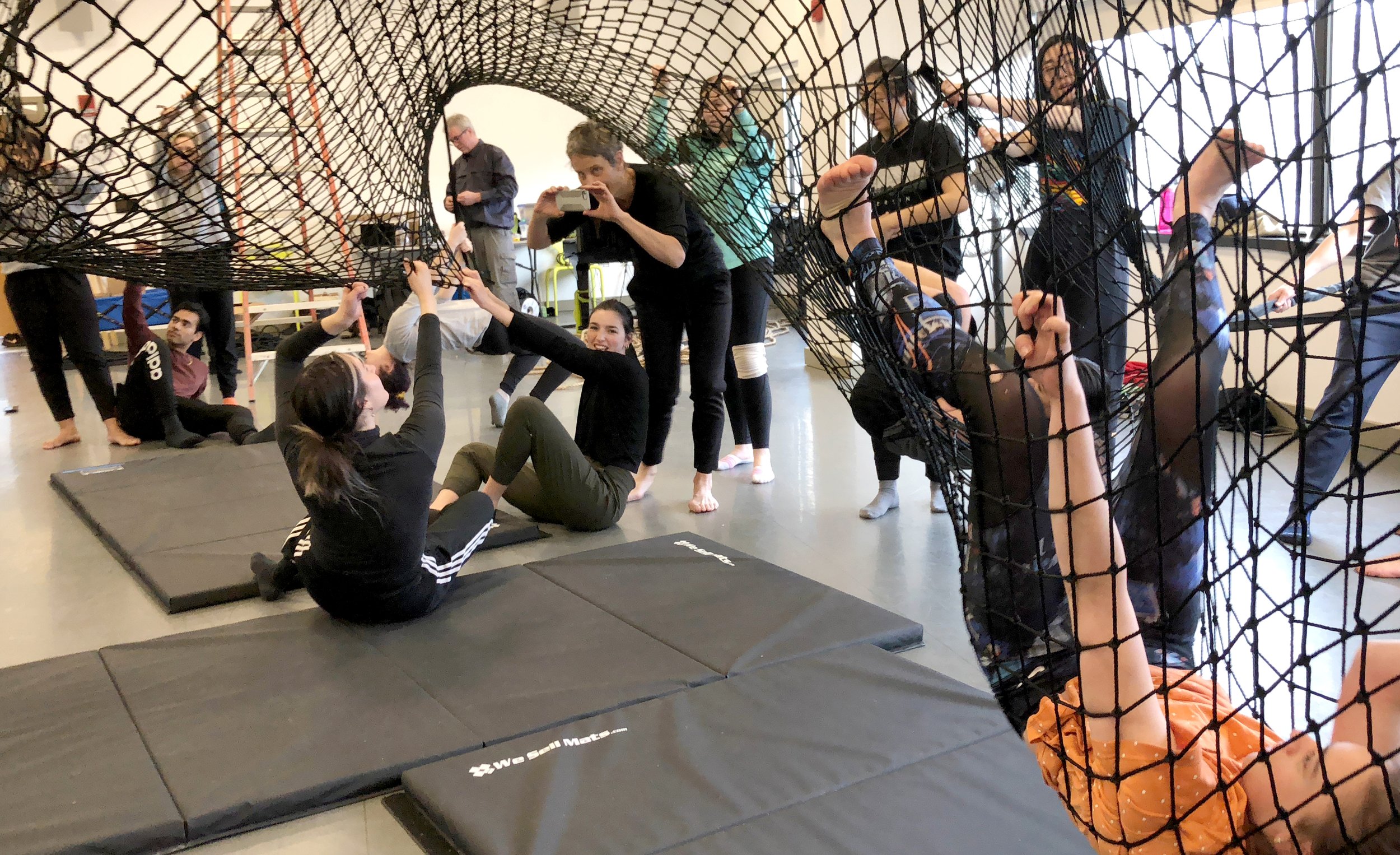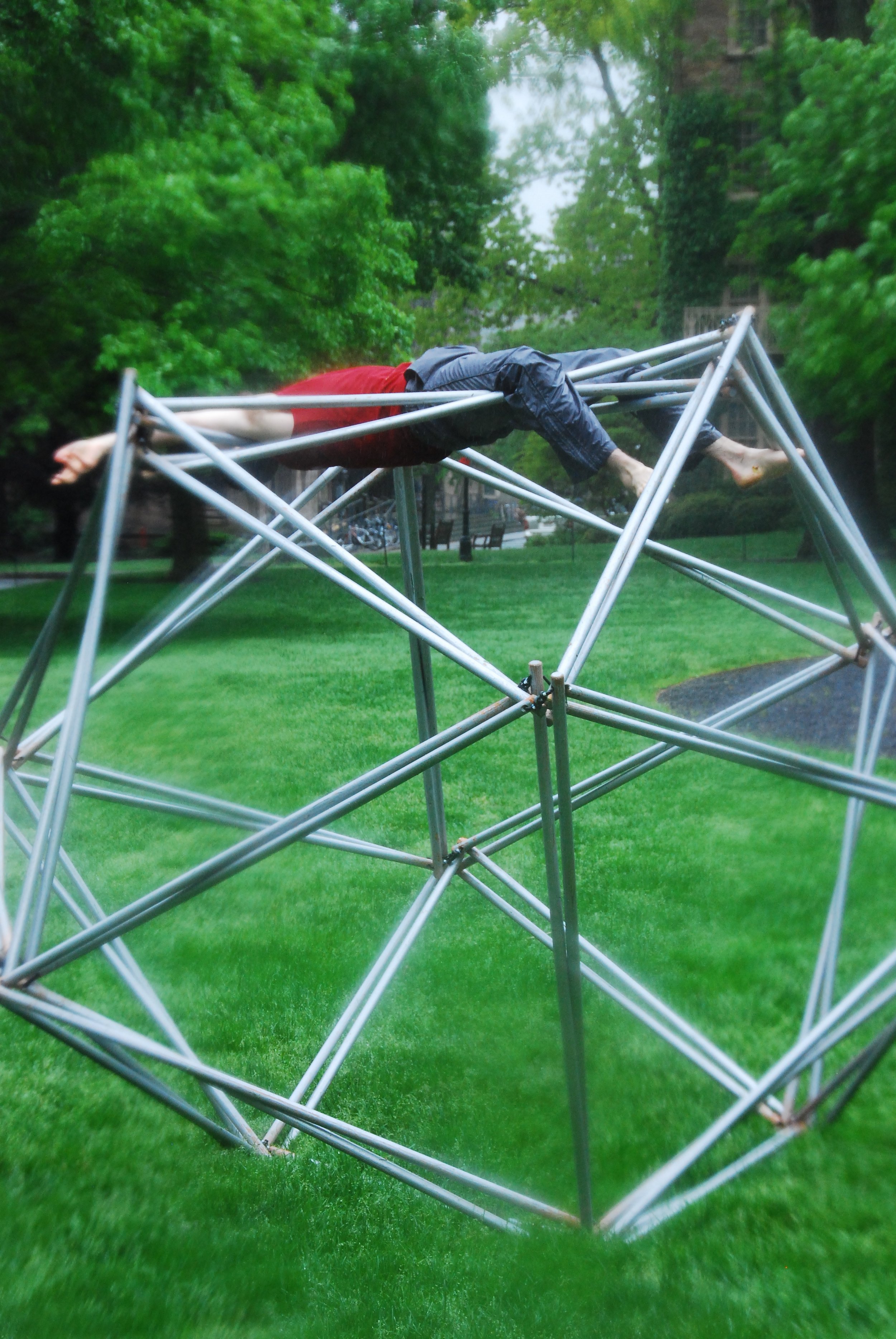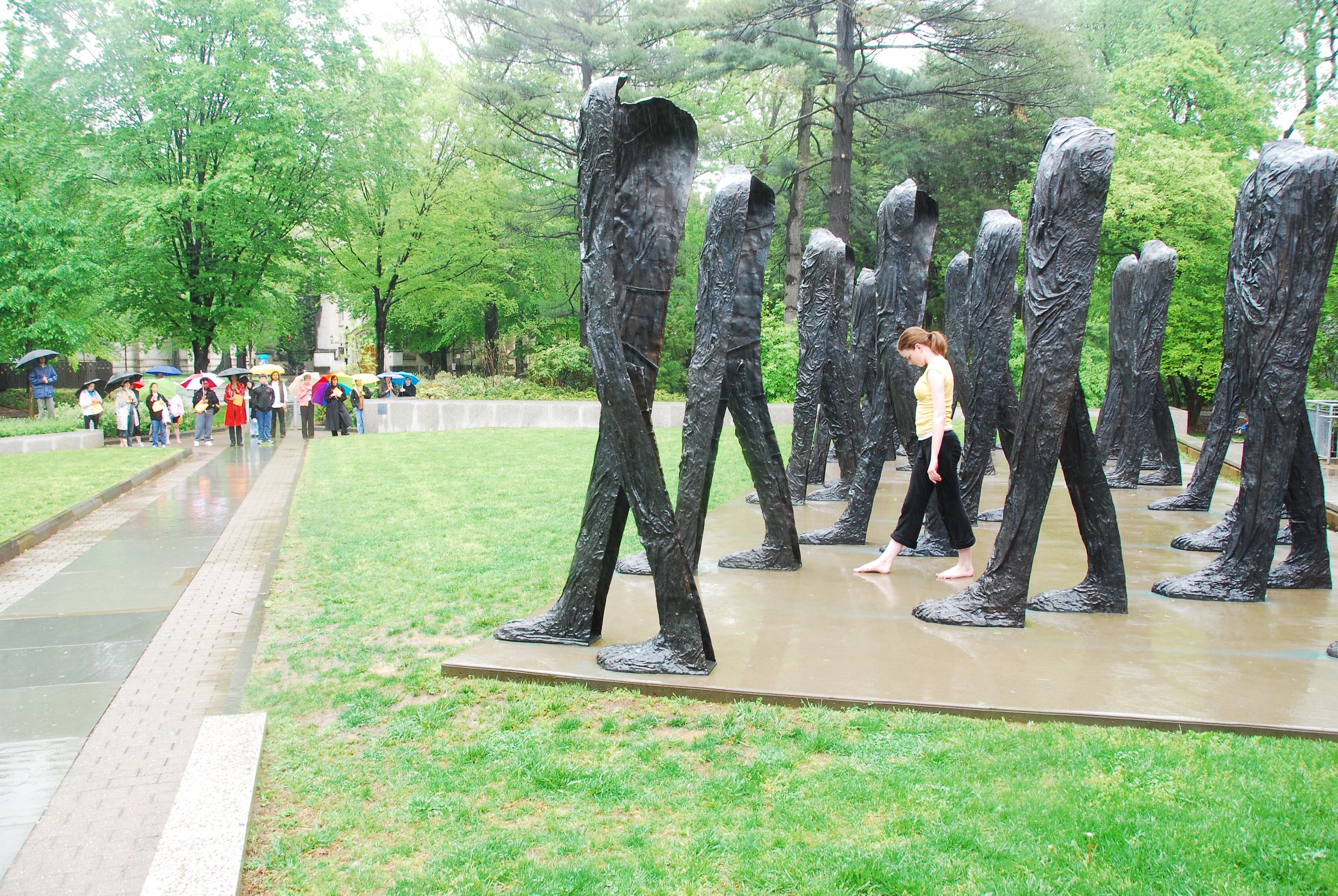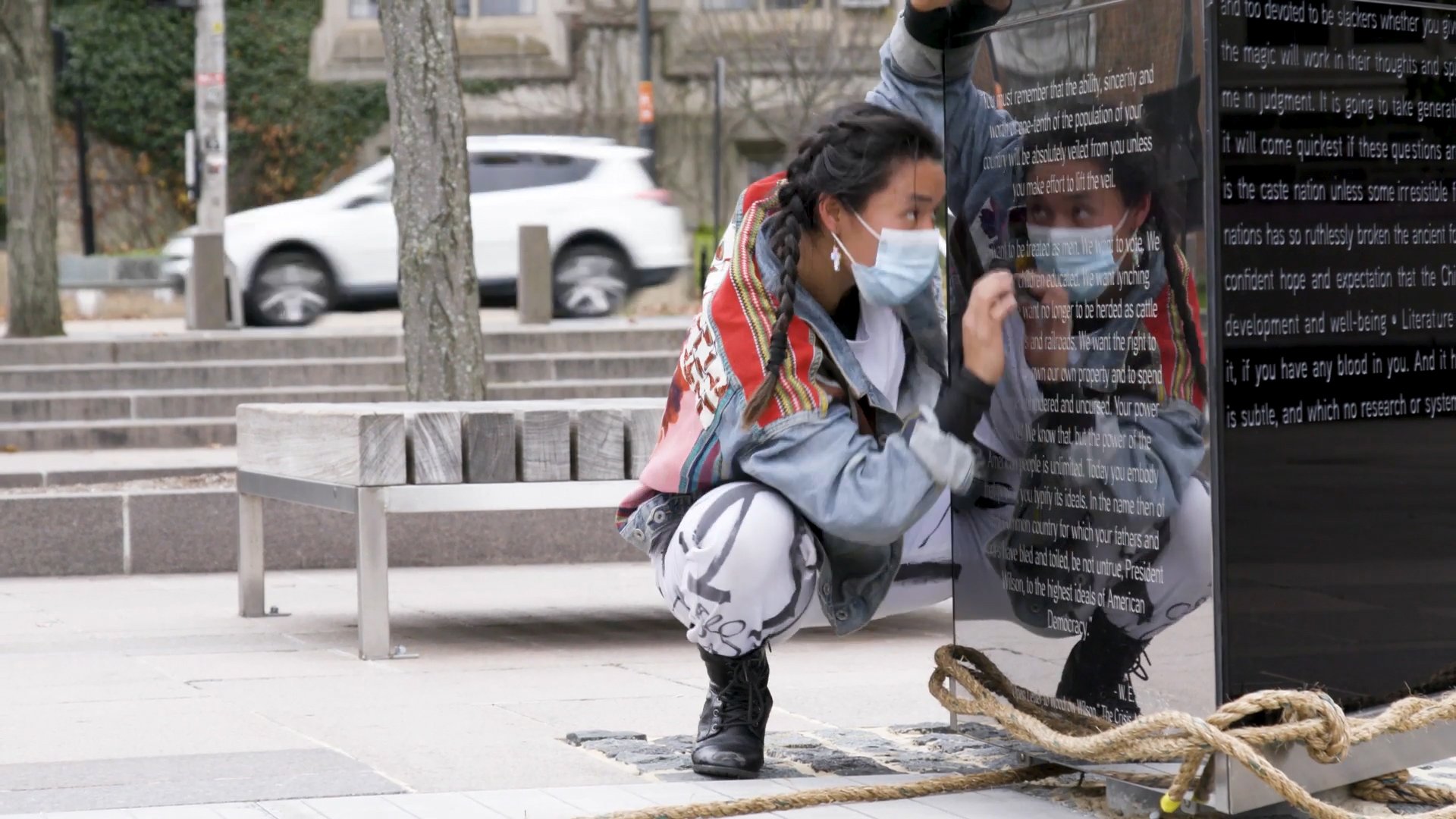Teaching As Artistic Research / Artistic Research as Teaching
Photo: Bentley Drezner
Currently, I am a Professor of Practice in the Program in Dance at Princeton University where I play a role in the curricular and curatorial development of the dance program and create interdisciplinary performance adventures.
I believe the performing arts have a transformative effect on people's lives. The process of uncovering one’s creative voice can provide tools for understanding in all pursuits. My teaching emerges from the intersections of who the students are, the choreographic research I am currently engaged with, and contemporary artistic practices.
A key question that drives my teaching is how to uncover and activate students’ imaginations. Imagination is the underpinning of research and the creation of new knowledge. Imagination is also critical to dance literacy—the integration of physical, creative and cognitive intelligences. I create teaching environments where each aspect of dance literacy is deepened through the creative experience of the others.
Through teaching I
question how dance training informs choreographic process and aesthetic research
reframe training to ignite physical research
expose students to current practices
animate the exchange of ideas
sharpen the critical eye
To these ends I have created over a dozen courses, including collaborations with faculty across disciplines. Here are just a few recent examples:
Site, Off-Site, Site-Responsive Dance and Choreography
When the pandemic shifted teaching online, I created this course in site-based choreography. We asked: Where can dance happen? What can it do? And who can do it? Through examining different conventions of site-responsive art—urban space interventions, itinerant performances, environmental constructions, walking art, audio-led scores—students generated choreographic projects within their communities.
Physical Language: Knowing through Movement
What does it mean to “know” in the body? By incorporating research in cognitive studies and neuroscience, with experiences of multiple somatic modalities, students develop a critical and embodied understanding of the mechanisms, and potential, of movement cognition.
Building Physical Literacy: Approaches to Contemporary Dance Practices
What happens when we learn a multiplicity of contemporary dance techniques side by side? How do we draw connections through those conversations—in the studio and in the body? Through comparative embodied practice, reading, and viewing assignments, students experience and synthesize the leading influences shaping movement research and choreography today. Each semester is built through intensives with 4–6 expert practitioners. Past modalities include: Contact Improvisation, Forsythe Technologies, Umfundalai, Flying Low/Passing Through, Fighting Monkey Practice, Axis Syllabus, Gaga.
The Understor(e)y: Suspension, Movement, Space
Developed with visual artist Janet Echelman, engineer Sigrid Adriaenssens, and sound artist Jess Rowland in this course students created suspended textile sculpture installations that activated, and were activated by, movement and sound. Students from across campus focused in areas of engineering, sound design, visual arts, dance, theater, collaborated to prototype interdisciplinarity.
Other examples of the merging of artistic research and teaching include: designing a pioneering course on Balanchine with Heather Watts (New York City Ballet Principal dancer) that mapped and adapted his choreography into an original work; staging composer Fred Ho’s martial arts opera Journey Beyond the West: The New Adventures of Monkey at the Guggenheim Works & Process and later with Princeton students; organizing the conference International Dance Festival: Contemporary Dance in Poland, Turkey, and Canada in coordination with the New York Live Arts premiere of There Might Be Others.
